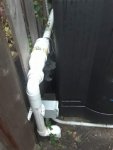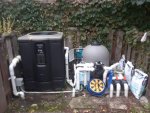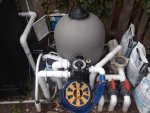I had a company come out and close my pool last winter. I took notes while they were doing it so I could do it myself this year and ongoing. In my notes I see that they had somehow added antifreeze to the return lines and verified that antifreeze was coming out of the return lines before capping them off.
I've been watching videos on pool closings for the past few hours and I see tons of example where people put antifreeze into the skimmers once they are blown out so that part seems fairly straight forward. What I don't remember and for some reason can't seem to find much information about is how they would have gotten antifreeze into the return lines. I assume (and have read) that I shouldn't add it to the pool pump and blow it through all of the equipment.
Can anyone advise on how best to get anti freeze into the return lines? I've seen a few videos where people use a funnel to pour the antifreeze into the return line at the outlet itself but I'm pretty sure when the guys did it last year they added it at the pad somehow?
Thanks in advance!
I've been watching videos on pool closings for the past few hours and I see tons of example where people put antifreeze into the skimmers once they are blown out so that part seems fairly straight forward. What I don't remember and for some reason can't seem to find much information about is how they would have gotten antifreeze into the return lines. I assume (and have read) that I shouldn't add it to the pool pump and blow it through all of the equipment.
Can anyone advise on how best to get anti freeze into the return lines? I've seen a few videos where people use a funnel to pour the antifreeze into the return line at the outlet itself but I'm pretty sure when the guys did it last year they added it at the pad somehow?
Thanks in advance!





